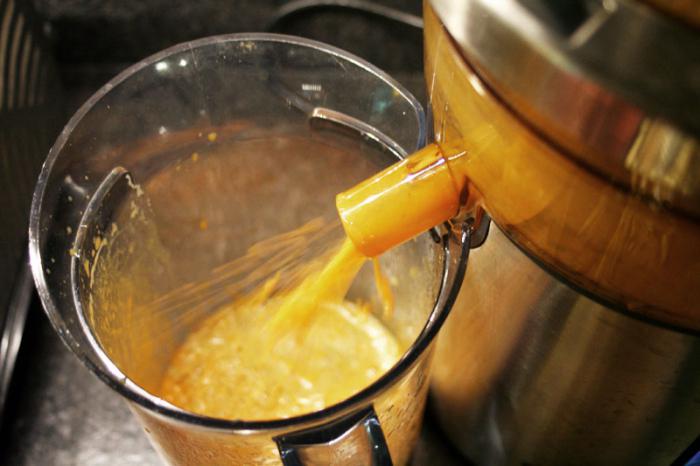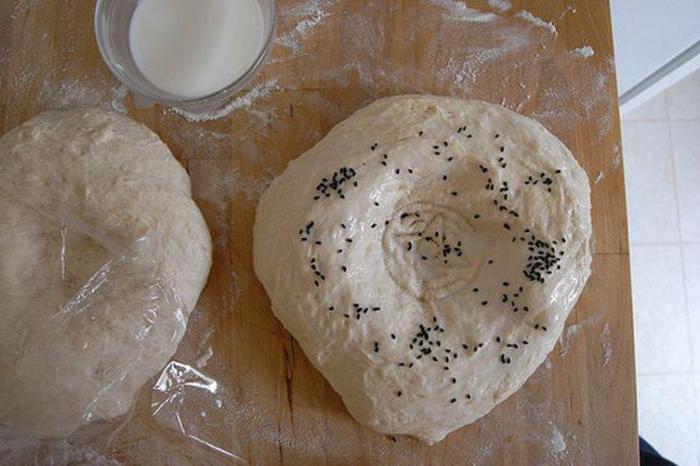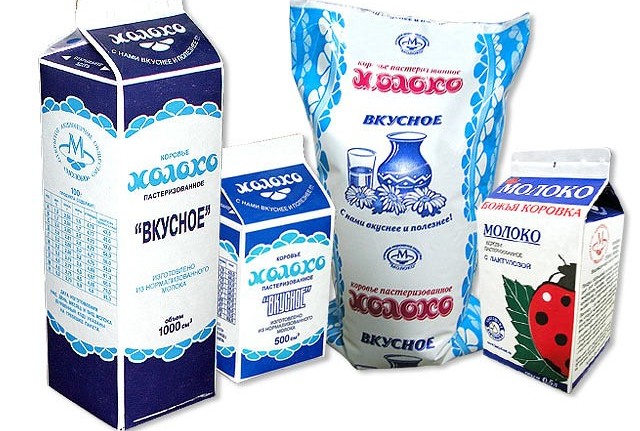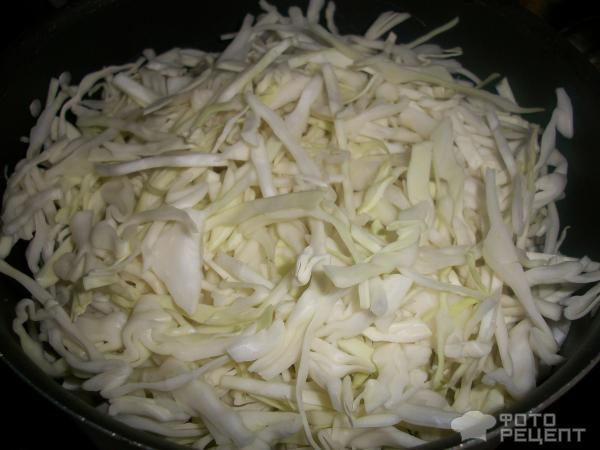How to make cottage cheese - a recipe for cooking. How much and how to cook cottage cheese at home
The process of making cottage cheese at home takes a minimal amount of time, cost and effort.
However, the product that you prepare yourself will differ significantly from similar competitors that modern manufacturers offer customers.
Home-made cottage cheese contains much more useful substances, which, unfortunately, are present in the factory variants with a minimal amount.
1. In no case can you bring the yogurt to a boil - the cottage cheese will turn out dry and tasteless.
2. The longer the whey drains, the denser and drier the curd turns out.
3. Throw the cottage cheese into a colander only when the whey is well separated, otherwise the cottage cheese will turn out acidic.
4. Experienced housewives never drain the serum into the sink. On its basis, you can cook delicious pancakes, pancakes, jelly, kvass or jelly.
As you can see, there are quite a few ways and recipes for making homemade cottage cheese. All of them are simple and will not take away much of your precious time. So cook the cottage cheese at home and feed your kids a tasty and healthy product.
Homemade cottage cheese recipes
Cottage cheese
To make a classic rustic cottage cheese, you need 2 liters of fresh homemade milk, a clean gauze napkin, two pots that are included in one another.
Milk must be poured into a smaller saucepan, covered with a lid and placed in a warm place, for example, near a heating battery, for such a time during which the milk should turn sour. Usually it is somewhere around a day. For taste and acceleration of souring, 2-3 tbsp can be added to the pan. tablespoons nonfat sour cream. Then place the pot with sour milk in a large pot, but about the same height, and fill the gap between the walls of the pots with water.
Put both pots on a slow fire and never leave the stove for a minute. As the water boils, the sour milk will move away from the edges of the pan, a yellowish liquid will come out. At this moment, urgently need to remove the pan from the fire, remove the smaller pan and cool the semi-finished product. Then lay the gauze napkin on the bottom of the sieve and carefully lay the curdled milk on it with a tablespoon. Tie the edges of gauze together and suspend the nodule so that serum gradually drains from it. What remains on the gauze bandage is cottage cheese. To get a denser cottage cheese, a load must be placed on cheesecloth with cottage cheese.
Preparation of Calcined Curd
A product made in this way will have a low level of acidity, so it is ideal for diet and baby food. The main feature of the preparation of cottage cheese is the addition of calcium lactic acid (diluted with water) at the boiling stage of the milk with constant stirring (3 teaspoons per 2 liters of milk). Powder can be purchased at pharmacies. The yield of the finished product will be 300-400 grams. Further, the technology is similar to the above methods.
Ready-to-eat cottage cheese is stored in a refrigerator in a glass or enameled bowl, after having put a couple of sugar cubes in it. Homemade cottage cheese can be stored in the freezer for one month, but at the same time its taste is slightly changed. It is strongly not recommended to store the product in plastic bags. If the cottage cheese suddenly became sour, then it must be mixed with fresh milk in equal proportions and left for 60-90 minutes. After that, the cottage cheese is put in cheesecloth (cotton bag) and put under the press.
Cold way to cook homemade cottage cheese
Ingredients:
- 0.5 l kefir
- 1 tsp Sahara
- 1 tsp Sahara
- 1 tsp Sahara
- 50 g prunes
Cooking method:
In addition to the preparation of cottage cheese in a hot way, there is also the preparation of cold cottage cheese, such cottage cheese is more like a cream. Great for feeding babies from a young age. In addition, many different dried fruits are suitable for him.
It will take 25 minutes to prepare the dish:
To prepare the cottage cheese in this way, you need frozen kefir, you can put it in the freezer until it is frozen, you can also leave it there overnight so as not to wait for a freeze during the day.
After complete freezing, take out the package and thaw the contents, without using any auxiliary means, boiling water or warm air. Pass kefir through a fine sieve.
Hang the resulting mass for 20 minutes, it can also be used for baking.
Cottage cheese is ready in a cold way. Now you need to add sugar and dried fruits to it, you can add fresh fruits to taste, you can prepare a healthy and vitamin-rich dessert.
Cooking cottage cheese with lemon
Take skim milk and pour it into a large container. Take a lemon and squeeze it into milk (1 liter of milk - a little more than half a lemon) and mix. This is necessary so that milk curls faster. You can, of course, wait for the milk to sour under natural conditions - put the dishes with milk and a crust of rye bread in a warm place, for example - to the battery. However, if you have fat milk, you can first cook homemade yogurt, remove its fat from the surface, and then, when it is left to stand (it usually takes 1-2 days), cook the cottage cheese. As a sourdough, you can use purchased kefir or yogurt (literally a spoon) or the previous sourdough or whey. If you leave the milk to sour without souring, the process of putrefactive fermentation may begin.
You will see how milk begins to curl, and whey becomes transparent. No need to wait until the milk clots become too dense - then your cottage cheese will be too grainy. Strain the whey through cheesecloth - on this whey you can then cook homemade diet bread or pancakes; put the cottage cheese in a separate container and you can eat.
Quick homemade cottage cheese recipe
It is necessary:
- 2 liters of milk
- 2 jars (250 g) of natural yogurt
How to cook:
1. Pour 2 liters of milk in a dish suitable for microwave ovens, heat them to the desired temperature (about 40 °). Add 2 jars of natural yogurt and leave in a warm place until the milk is curdled and a thick yogurt is obtained. It usually takes 10-12 hours, but it depends on the room temperature.
2. Put a bowl with yogurt in the microwave for 15 minutes at a maximum power of 800 W - the contents will heat up, warming evenly, and curl up - curdled. Clear whey will clearly depart.
3. Carefully shift the curdled lump into a gauze-lined colander located above the pan (to collect serum), trying to ensure that the integrity of the lump is not broken.
4. Let the main whey drain, then suspend a bundle of cottage cheese for a while to make the glass serum better.
To make the process more clear, we prepared a step-by-step recipe with a photo. Feel free to add any of the proposed options to your culinary piggy bank, and indulge your homemade natural cottage cheese both in pure form and with various additives. It is prepared from milk, kefir, yogurt and other dairy products.
Heat treatment will take place at not too high temperatures. As a rule, the technology uses a water bath. For this, a pot of raw materials is placed in a bowl of water. At a high processing temperature and an increase in the duration of the process, cottage cheese worsens its quality. It becomes hard and dry.
For cooking, you need dishes:
- Glass jar;
- 2 pots of different diameters;
- Colander or strainer.
And also prepare a flap of natural fabric or gauze folded in several layers.
Before draining, soak the cloth (gauze) with boiled water and squeeze, and then nothing will stick to it.
For the preparation of home-made cottage cheese, milk is taken from under a cow or in-store. In the first case, the yield is greater, the product is fatter, and from the pasteurized store milk it is softer and more tender.
When buying raw materials in a store, choose milk with a short shelf life and a fat content of at least 3.6%.
A by-product of homemade cottage cheese is whey. It itself has nutritional value, and also behaves perfectly as the basis for the test. So do not pour it out, but use it for making pies and okroshka.
How to cook cottage cheese at home from home and store milk: a step-by-step recipe

Cottage cheese is a fermented milk product, it is obtained from sour milk, so the first stage of preparation is ripening. For this reason, long-term storage milk will not work, it simply will not turn sour. We take in polyethylene (it, by the way, is cheaper). Be sure to look at the date of manufacture - only fresh milk is suitable for us.
On a note
You can skim the cream from farm milk, but if you want to cook fatty cottage cheese, you don’t need to.

Step by step cooking:

We talked about how to cook delicious coarse-grained cottage cheese at home from whole sour milk, we gave a step-by-step recipe, but you can do without a water bath. The pan with yogurt is simply put on low heat and heated. Be sure not to burn. After folding, proceed as described above.
From kefir: fresh and frozen

You can quickly make cottage cheese from kefir. The yield will be less than from yogurt, but the taste is no worse. We skip the ripening stage and immediately put the dishes with kefir in a water bath. Do not forget to stir. The remaining serum can also be used, for example, to make pancakes or crumpets on it.
The heating temperature of kefir should not exceed 60 ° C, otherwise the cottage cheese will turn out hard.
A glass jar is perfect for making home-made kefir cottage cheese in a water bath, just remember to put a towel at the bottom of the pan so that it does not burst when heated. The process will be similar to sterilization of preservation, with the difference that it is not necessary to bring to a boil. The jar is convenient because it is not necessary to interfere with the mass, and the readiness will be easily tracked by the separation of whey from the curd mass. Through the glass it is very clearly visible.
A completely different technology is used for cottage cheese from frozen kefir. In this case, heat treatment is not carried out.
Stages of cooking:
- Put a pack of kefir in the freezer.
- After it freezes, remove it from the freezer, remove the packaging.
- Place the frozen kefir in a colander covered with a damp cloth or gauze folded in 2-3 layers. Place a colander over a bowl or pan.
- Leave to defrost for at least 5 hours at room temperature. Time depends on air temperature.
- When all the ice has thawed, trap the remaining mass on the gauze, transfer it to a glass or plastic container.
Cottage cheese from pre-frozen kefir is dietary, tender and soft, without grains. The consistency resembles a cream. The taste depends on the quality of the original product.
If the room is cool, the defrosting process may take up to 10 hours. It is convenient to put the bag in the freezer in the evening, and in the morning put kefir ice on cheesecloth. Then fresh home-made cottage cheese will be ready for dinner.
In a slow cooker: with sour cream and sourdough

In a slow cooker, cottage cheese is made from kefir, fermented baked milk or sour cow or goat milk. If there is fresh milk and sour cream, then with the help of a miracle saucepan you can also make a tasty product, only it will take longer, the process will take about 12 hours, and possibly even longer.
We will need such products;
- Milk - 10 glasses;
- Sour cream - ½ cup.
Cooking:
- Pour milk into the multicooker bowl.
- Add sour cream, stir. To make it easier to do, dilute sour cream in a small amount of milk, and then pour the liquid mixture into a bowl.
- Set the mode "Heating", leave for half an hour.
- After 2 hours, turn on the heating again, but for 15 minutes already.
- It is more convenient to put the cottage cheese for the night, then in the morning the yogurt will be ready.
- For cashing at the final stage, turn on the multicooker in the “Preheat” mode for 1 hour.
- Now it remains to recline the thick mass on cheesecloth. Pre-fold it several times and put on a colander, and place it above the pan.
- Wait for all whey to drain.
- Do not try to speed up the process by stirring the mass with a spoon. Leave it alone, in extreme cases - tighten the edges of the gauze alternately from all sides.
- As usual, transfer the finished cottage cheese to a suitable dish and refrigerate.
Instead of sour cream, you can use any dairy product: kefir, fermented baked milk, yogurt.

With special starter cultures, you can cook a delicious and healthy sour-milk product in 8 hours. An excellent result is obtained with the fermentation BakZdrav. The instructions attached to it are very detailed. In a slow cooker this is done like this:
- Pour the yeast into chilled boiled milk, stir.
- Pour the mixture into the multicooker bowl, turn on the “Yogurt” mode. If not, then set the temperature to 35-40 ° C, leave for 8 hours.
- With a spatula, cut a dense layer directly in the bowl into rectangles with a side of 2 cm (do not mix, but only dig deeper), set the temperature to 60 ° C, cook for 15 minutes.
- Drain through cheesecloth, cool.
Put in the refrigerator for at least 2 hours, after which it can be served. This curd is very popular with children. It is stored in the refrigerator for no more than 3 days. If you add berries, fruits or raisins to it and pour it with syrup, you will get a wonderful dessert.
Homemade cottage cheese with calcium chloride

If you need to increase the calcium content, then a pharmaceutical drug calcium chloride 10% is used for this. It is sold in ampoules and in bottles. When using an ampoule, observe safety precautions.
To prevent glass from accidentally entering the product, use a syringe and a needle to draw the drug.
- Milk - 300 ml;
- Calcium chloride - 1 tsp
How to cook:
- Boil milk
- Add calcium chloride, after which the milk will begin to curdle.
- Throw back on gauze, drain.
With this technology, two goals are achieved. Firstly, the preparation is very fast, no preparatory measures are required. Secondly, cottage cheese is enriched with calcium, which is necessary for the normal functioning of the body.
Calcined cottage cheese is often prescribed for children; it is useful for older people as a prophylaxis of osteoporosis.
We have given several options for how to cook cottage cheese at home. This can be done quickly with calcium chloride or without heat treatment by freezing and then thawing kefir. Very tasty and tender cottage cheese is obtained in a slow cooker. And there is a classic way that our grandmothers used. In each case, the consistency will be different, and the taste will also be different, so you need to try and choose what your family likes.
When it comes to home-made cottage cheese, a long row appears on the collective farm market with jars of sour cream, large bottles of milk, fresh butter and large basins, saucepans, plastic containers with cottage cheese: buttery with a creamy tint, snow-white with small grains of grains, medium - milk abundance for every taste.
The same picture, but near the milk window of the supermarket, for some reason, does not cause such an appetite, despite the colorful packaging, a clear, geometric layout of the goods and neat, smiling saleswomen. You take a pack of cottage cheese, and the parchment packaging is sticky! Or, no, not so. You pick up a plastic jar of cottage cheese, and it says that the shelf life is 2 weeks, and this is not the most awesome version of the inscription. You return home with firm confidence that you are carrying a "pig in a poke" for dinner. Natural dairy product cannot be stored for more than 3 days. Of course, not everything is so terrible. It happens that luck: both the manufacturer is conscientious, and the seller is interested in attracting buyers.
But in the market they will give you a try and talk about life, and, in the meantime, you can find out in which meadow the cow grazed from which milk was made, what it was fed with and when it was vaccinated. Well, this is a real choice, as they say, with taste and sense. Good homemade cottage cheese is always in great demand. If you are late, and it is over - no big deal. There is still some milk left, and the village women are always in a hurry to return home early - they have a large farm, a lot of work. Therefore, after bargaining and buying 5-10 liters of milk, you will also remain in the gain - they will certainly be inferior in price. We return home and begin to conjure, or rather, create: it is this word that is etymologically linked to the word "cottage cheese".
Homemade curd from curdled milk - preparation of raw materials
Raw materials, in this case, are called milk purchased on the market. We do not consider options for preparing cottage cheese from milk purchased in the store, since even natural whole milk, but in the original packaging, will not give the desired result. In production conditions, milk is subjected to obligatory pasteurization at high temperature. As a result, low-quality dry curd grain is obtained from such milk.Home-made cottage cheese is different from industrial methods of milk processing. Pasteurization of milk occurs at a temperature from 630C (long-term processing) to 900C (instant pasteurization). Lactic acid bacteria die at 37-450C. That is, after warming the milk, its fermentation in a natural way becomes impossible. In addition to the fact that during high-temperature processing, milk loses almost all of its valuable vitamins and amino acids, it loses its ability to clot, and it is this quality of the product that underlies the preparation of cottage cheese.
But what about sanitary standards, and how to cook curd from yogurt at home to get a natural product and, at the same time, protect yourself from pathogenic microbes?
The answer to this question lies in the ability of sour milk bacteria to produce lactic acid. Raw cow's milk contains 96% of harmful microorganisms and 4% of lactobacilli, but these four percent are enough to create an acidic environment and destroy pathogenic microorganisms.
If it is so easy to get rid of pests, then why is milk being pasteurized in factories? Everything is simple. Tons of milk are brought to dairies, they are collected on farms and in private farms, pouring everything together into large tanks. With such volumes, it is difficult to keep track of the purity of the raw materials, especially since milk is a perishable product and it is necessary to bring it for processing quickly. A housewife buys milk from one seller. It is no accident that at the beginning of the article it was mentioned in such detail about personal communication with the seller in the market.
What else is the process of preparing milk and how to cook curd from yogurt at home?
Depending on the fat content in milk, cottage cheese can also be of different fat content. Whole homemade milk may contain up to 30% fat. Therefore, if you want the cottage cheese to be dietary (non-fat) or bold, then you need to remove the cream. Let the milk settle in a glass bottle so that the oily particles float to the surface. Creaming at home is convenient in the following way: a plastic tube is inserted into the bottle with settled milk (the tube from the medical system for drip injections is suitable). The tube should touch the bottom. Lower the second end into another container, located at a level lower than the bottle. Transfer milk to another bowl until only the oily portion remains in the bottle. You can make sour cream from cream, and leave the skim milk that has been drained, leave the pan for ripening and further preparing the cottage cheese.
This completes the preparation of milk for cooking homemade curd from yogurt. We turn to the question of the main technological aspects of obtaining cottage cheese.
Homemade curd milk curd - fermentation of milk
Milk will turn sour by itself, if you put the container for several hours in a warm place. Then what is it about? That it is possible, for example, to accelerate this process.In fresh milk to obtain yogurt (without this product, curd cannot be obtained in any way) add for fermentation:
Lemon juice or a solution of citric acid - one tablespoon per liter of warm (25-370C) milk;
Sour-milk products - sour cream, kefir, ready-made yogurt, natural yogurt. In this case, the milk is also preheated to create the most favorable conditions for the life of lactic acid bacteria;
Special starter cultures - they can be purchased at a pharmacy or specialized points of sale (acidophilus, acedin-pepsin, Lactone and others). They are added to milk according to the attached instructions for use.
Yogurt is ready, only this is half the battle. We turn to the main goal - to obtain cottage cheese from it.
Homemade curd from curdled milk - the main technological moments
First you need to know that milk is about 80% water, and only 20% are solids. From here - from a liter of milk you can get no more than 200 g of cottage cheese, and if milk is skimmed, then the weight of the finished product decreases in proportion to the proportion of fat in the composition of milk. As you know, fat also consists of water and retains moisture, which implies that the cottage cheese from skim milk will turn out to be dry, with a lower serum content. As they say, it’s a matter of taste, but if you need to get low-fat cottage cheese with a sufficient degree of moisture, then you need to strictly observe technological points.Fermented milk needs to be warmed up, but not overheated so that milk protein does not curl to a rubber consistency. During warming up the yogurt, the mass must be constantly stirred to ensure uniform heating. The temperature of heating at home is rarely determined using a thermometer, but approximately the separation of milk protein begins at 500C. At this time, the solid mass begins to rise to the surface of the pan. In order not to dry the cottage cheese, turn off the stove and cool the serum together with the formed clot to 20-250С. After you can start pressing. It is very convenient for this purpose to line with a gauze a colander mounted above a container for draining whey. Pour the contents of the heated pan through a colander. Part of the serum drains immediately, easily separating from the clot. The whey remaining in the almost finished cottage cheese is separated by pressing, controlling the humidity of the finished product at its discretion. To do this, tie the ends of the lined gauze and hang the cottage cheese over the dishes for further draining of the liquid. In the same way, but using oppression, they get rennet cheese: the cottage cheese tied in a gauze napkin is placed under the oppression to get pressed cottage cheese.
This is the easiest way to get homemade cottage cheese from yogurt, known to mankind not one hundred, but maybe even a thousand years. Well, of course, I want, as always, variety. Then we apply more complex, but interesting options to the main recipe.
Recipe 1. Curd, fruit
Composition:- Forest berries (in assortment) 300 g
- Fat-free cottage cheese 700 g
- Fructose 250 g
- Water 100 ml
Sprinkle fructose with strawberries, raspberries, or other berries of your choice and wait for the juice to separate. Mash them, add water and boil for 5-10 minutes. After cooling the fruit mass, wipe it through a sieve to remove grains and peel. Beat cottage cheese with a blender, gradually pouring fruit syrup.
Recipe 2. Cheese, vanilla with raisins - a favorite taste of childhood
Composition:- Cream
- Cottage cheese
- Sugar
- Vanillin, crystalline
- Raisins, light
If the cottage cheese is oily and moist, then adding cream is not necessary. Moisten the curd grain with cream (10-15%). Proportions are chosen at our discretion. We combine all the components in a blender, and add the raisins at the end, into the whipped and magnificent curd mass, and mix it thoroughly.
Recipe 3. Cottage cheese snack, spicy
Composition:- Cherry 10 pieces
- Curd 200 g
- Garlic 10 g
- Basil, red
- Parsley
- Ground hot pepper
Wash the tomatoes, cut the part with the stalk. You can do it beautifully, in a zigzag line. Remove the seed core with a spoon. Chop the greens finely, grate the garlic on the smallest grater. Put cottage cheese in a blender bowl (it is better to use bold), add prepared greens and spices. Paste into the pasta and stuff the tomatoes. On top of stuffed vegetables put hats with ponytails.
- Too sour or too dry cottage cheese can be corrected. Pour fresh whole milk into a saucepan and heat it to 35-400С. Put the cottage cheese that needs to be improved in warmed milk and leave for 10-12 hours. After strain through cheesecloth.
- For long-term storage, the cottage cheese can be frozen, but first place it in portions in containers and seal it tightly. Immediately after defrosting, cottage cheese should be used. Repeated freezing will turn it into useless biomass.
- Cottage cheese for storage can be salted. This method of storing cottage cheese was used by our ancestors. If then you need to cook a dish of sweet cottage cheese, then it can be washed with water and squeezed.
Good day to everyone who has just looked!
I started making homemade cottage cheese when my baby began to introduce this product into complementary foods.
When buying everything that our market offers, parents are often afraid to poison a child with a poor-quality product, and they are alarmed by the long shelf life of products intended for babies.
I theoretically knew how to cook cottage cheese on my own and at home (my grandmother lived in the village and regularly cooked cottage cheese myself from fresh cow's milk), but I had no idea how to do it in a city apartment and use dairy products from the store.
But having a desire will quickly master everything.
My friends, cooking it is easy!
And you can do this from anything, if there is no homemade milk, you can use the storefront, but you should choose the producer who is more trusted. Milk must be left at room temperature to form a yogurt.
You can cook cottage cheese from kefir. That is, there are a lot of ways to make it.
I try to produce this healthy sour-milk product from milk, which has become curdled milk. After all, it often happens that you do not have time to use up milk, and its shelf life will soon come to an end. Immediately putting it in a warm place, for a day you can get a good and thick yogurt, which is perfect for cottage cheese.
We need only a box or a package of milk, already sour, well, or kefir.
You can cook as much as you like, a little will be obtained from this amount of milk, so it’s worth counting for what purposes cottage cheese is needed.
In addition to the main ingredient, we need a small saucepan, colander and clean gauze, and it is better to use sterile if the cottage cheese is intended for a small child.

Pour the yogurt into a saucepan, put it on a slow fire.
You can’t go anywhere, otherwise you can overexpose and miss the cooking process without turning off the fire on time.

Look, such water will be separated. The liquid is divided into 2 fractions. As soon as our curdled milk and the upper one begin to boil, the liquid layer will separate from the lower dense mass, turn off the fire.
You can immediately cook a colander by throwing gauze on it in several layers.

Pour the contents of the pan into this gauze.
The whey drains into a deep bowl, and the curd remains in gauze.

Serum, if desired, can be used in okroshka or bake pancakes on it. Well, or just a drink, because it is useful. True, I do not know if there is such a benefit from store milk. In summer, she goes to okroshka, and in winter only to pancakes.

Let the water drain to the end, slowly squeezing the edges of the gauze.
When the cottage cheese ceases to be wet, we release it from the material; put in a plate or bowl.

Add sugar to taste.

The taste of such home-made cottage cheese is very pleasant and gentle, it is not sour at all, but sugar will not hurt a little.

And here he is ready! Still warm, fresh and can be eaten, both in pure form and with additives.
A banana or some famous berry is suitable for the baby. In a twisted form, with the help of a blender you get a smooth curd puree with fruits. But you can further use the cottage cheese, having prepared a dessert from it, cheese cakes, for example.
Or dumplings, who love with cottage cheese. Personally, this time I decided to bake pancakes, but on the remaining serum. I wrapped the cottage cheese in them and served with sour cream.
Now I don’t buy cottage cheese in the store. If more is needed, then I take a few boxes of milk and cook in the right amount. It’s so simple.

Delicious, inexpensive, homemade cottage cheese in a few minutes.
Try it, if you haven’t cooked it yourself, it’s very simple and fast!
It took me 20 minutes of time, from the beginning to the very end, when the cottage cheese was already ready and lay in a bowl of sugar.
Well, it’s up to you to decide how to dispose of it!
Enjoy your meal!
Time for preparing: PT00H20M 20 min.
The approximate cost of a portion: 55 rub
How to make homemade cottage cheese from sour milk with step by step photos.
There are different ways to cook cottage cheese at home, sometimes cottage cheese is made from kefir, from curdled milk when boiled, from sour (homemade) milk. We’ll make home-made cottage cheese from sour home-made milk, or, more simply, yogurt. My grandmother taught me this recipe a long time ago, she has been using this method for many years, and on her table, every day, there is fresh home-made cottage cheese.
So, the first and main condition is that milk should be homemade (from under a cow or from a dairy farm), usually with a 3-liter can of homemade milk, you get 700-900 g of cottage cheese (sometimes more) and half a liter of sour cream. So, you bought 3 liters of homemade milk, it is advisable to buy milk immediately in a glass jar. From home milk, you need to collect cream if the milk is fresh, or sour cream if it is already sour. To do this, let the milk stand for several hours, then the cream will rise to the top, and you will see that a layer of cream has formed on top (they have a more yellow hue than milk), carefully remove the cream with a tablespoon and pour into another jar. You can wait until the milk turns sour and remove sour cream in the same way. Sometimes when buying milk, especially from the hostess (they shake it specially in the bazaars), you can immediately see a raised layer of cream. The amount of cream will depend on the fat content of milk, sometimes they are specially drained before sale.
The second condition, the milk should not be sour in the refrigerator, when the milk turns sour in the refrigerator, instead of turning into yogurt, it gets an unpleasant odor and deteriorates. Usually I buy homemade milk to use it fresh, but as soon as I feel that it has started to sour, I immediately take it out of the refrigerator and leave it at room temperature. If you bought milk to make cottage cheese from it, then you must immediately leave it at room temperature. The process of souring depends on the temperature in the room (in the summer milk can turn sour in a day, in the winter the process can take 2 days), sour milk (yogurt) is somewhat reminiscent of jelly or jelly, if you scoop up such milk with a spoon, it will look like a piece of soft jelly. When your milk has turned into yogurt, you can start making cottage cheese, or at least put the sour milk in the refrigerator (otherwise the milk will strongly peroxide). After the milk has turned sour, it is better to make cottage cheese within 1-3 days (faster in summer), otherwise the milk will peroxide and the cottage cheese will turn acidic, you can determine if your curdled milk is peroxidized or not (peroxidized milk has an unpleasant, too sour smell).
If you want to speed up the process of souring milk, then in fresh milk you can add a little sour milk, a piece of cottage cheese, or a little homemade sour cream. Sour-milk bacteria that are in sour milk or in cottage cheese will multiply and fresh milk will quickly sour. You should not add kefir, yogurt or other sour-milk products to fresh milk. If you add kefir or yogurt to milk, then you will get non-sour milk, namely kefir or yogurt. The taste of such home-made kefir may differ from the factory one, because when preparing sour-milk products, certain temperature conditions must be observed. To prepare these fermented milk products, completely different fermented milk bacteria are used than those that independently reproduce in milk.
If you use fresh yogurt, then the cottage cheese is tender and tastes good, such cottage cheese is perfectly stored in the refrigerator for up to 5 days.
Ingredients :
- Homemade milk 3 L
Preparation time: 2 days. Cooking time: 15 hours.
Ingredients for the recipe "Homemade cottage cheese. How to make cottage cheese from milk at home"
- Milk - 3 l
The recipe for homemade cottage cheese:

In yogurt, it is advisable to make a cross-shaped incision to the bottom of the can, so it is evenly warmed up. Curd should be cooked on low heat. The bottom line is that the curdled milk would warm up evenly. The readiness of yogurt should be checked by lowering your finger in the middle of the jar, as soon as the yogurt in the middle of the jar has become warm 35 * -40 * the fire can be turned off and the jar can be left in the water so that the curd comes up. If the yogurt in the middle has become too hot, then the jar should be removed from the water and left to cool at room temperature.

We take a deep pan, put a fork or a rag folded in several layers at the bottom (so that the jar does not crack). We put a jar of yogurt and fill the pan with water, the water should be flush with the milk in the jar. We put the pan on medium heat. Do not cover with a lid.

So, the yogurt was heated and the cottage cheese began to separate from the whey, now it needs to be cooled to room temperature. The photo shows how the cottage cheese began to separate from the whey. The readiness of cottage cheese can also be determined by the appearance of yogurt. Ready-made cottage cheese is significantly reduced in size; bumps and cracks appear in it.
Typically, the cottage cheese rises, sometimes it first drops (as in the photo), and then rises.

After the yogurt has cooled, it needs to be poured into doubled gauze.

So, the milk was sour and I removed a layer of sour cream from it.
The photo shows that the milk seemed to be stratified into a layer of yogurt and a layer of sour cream (sour cream).



















